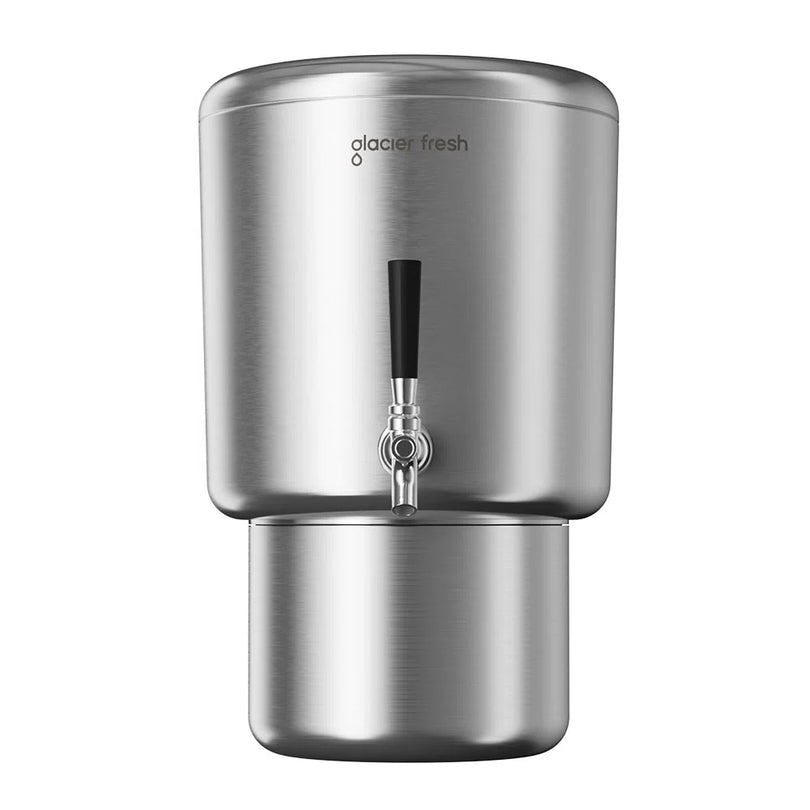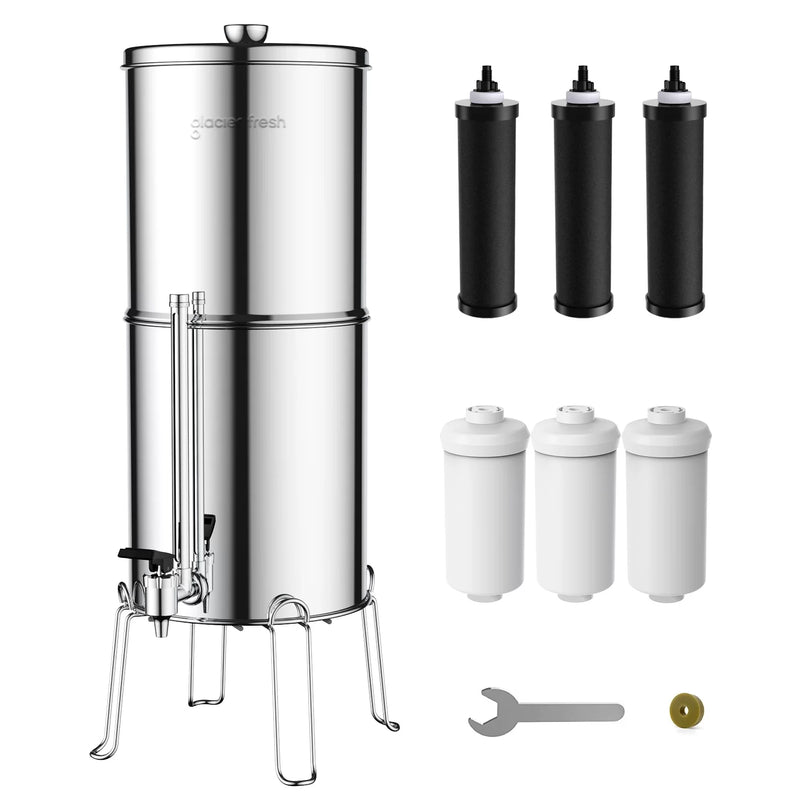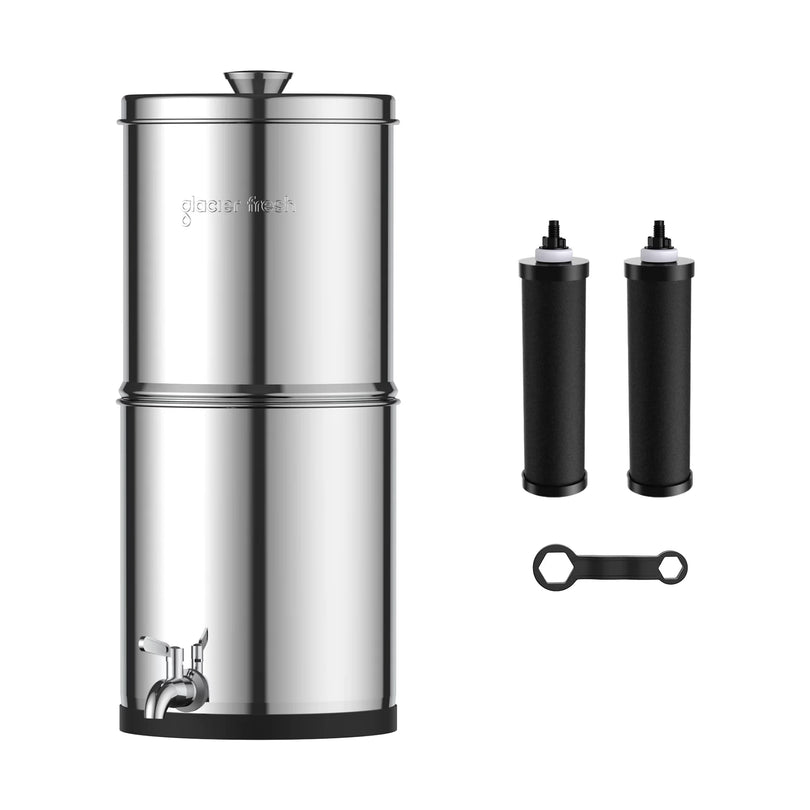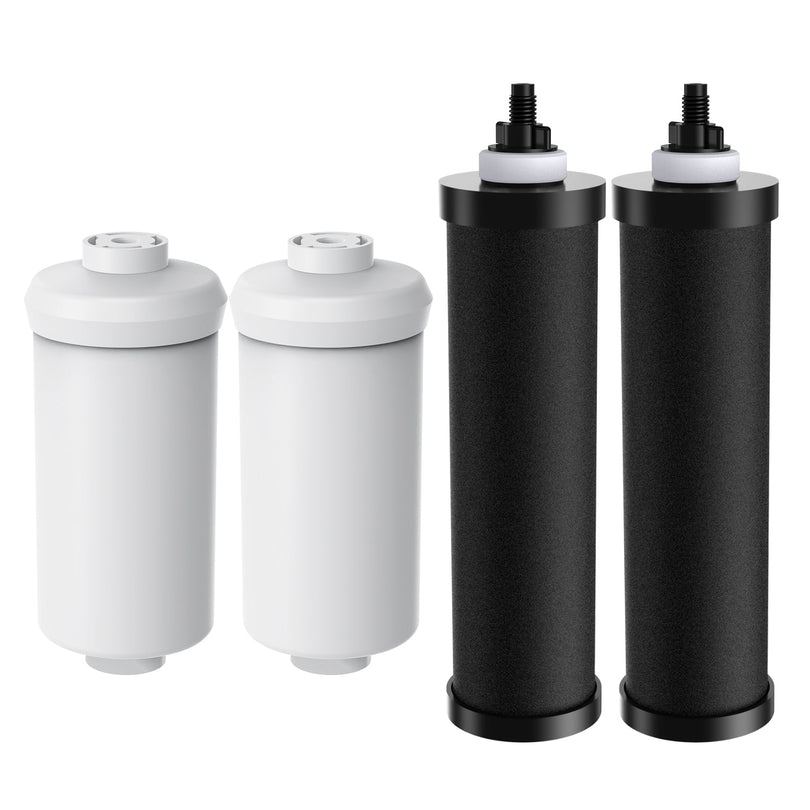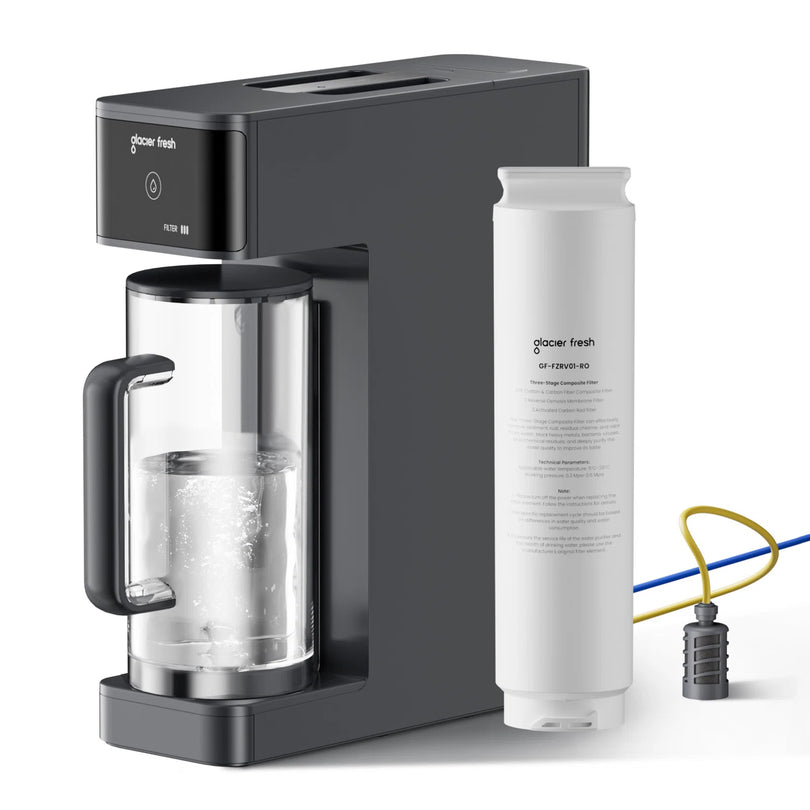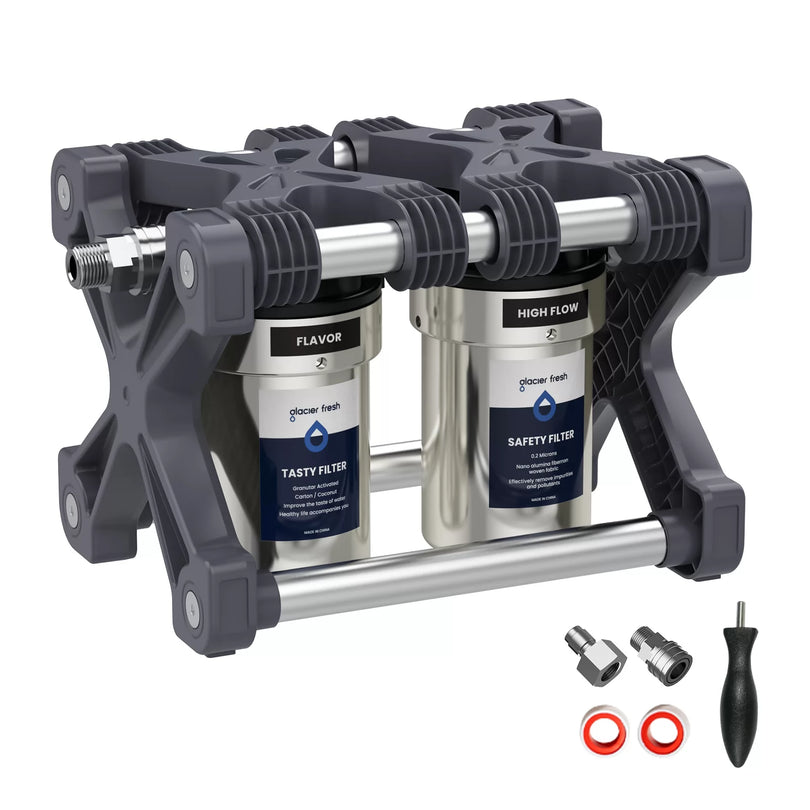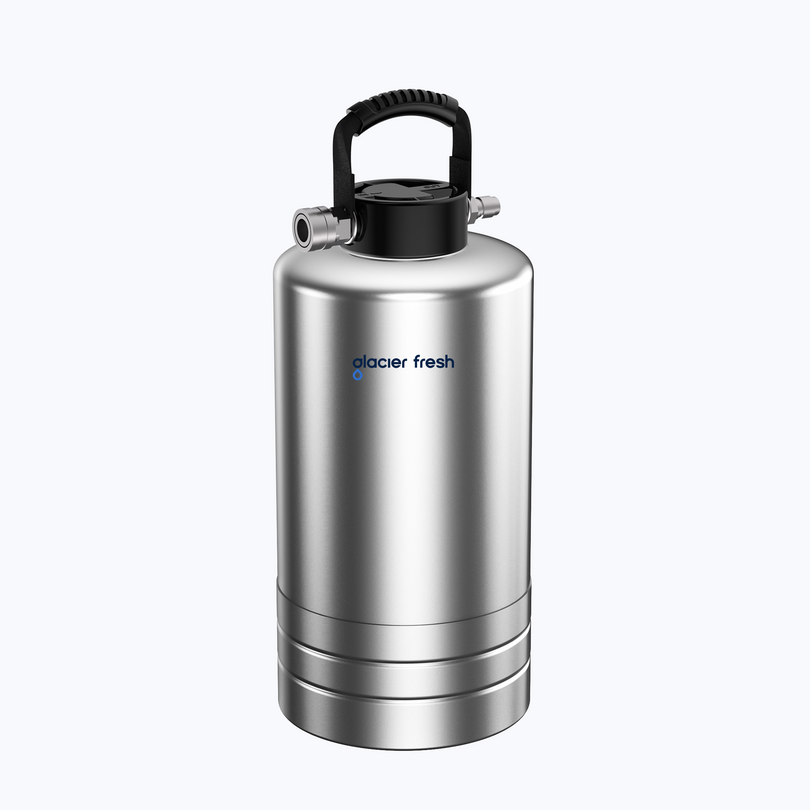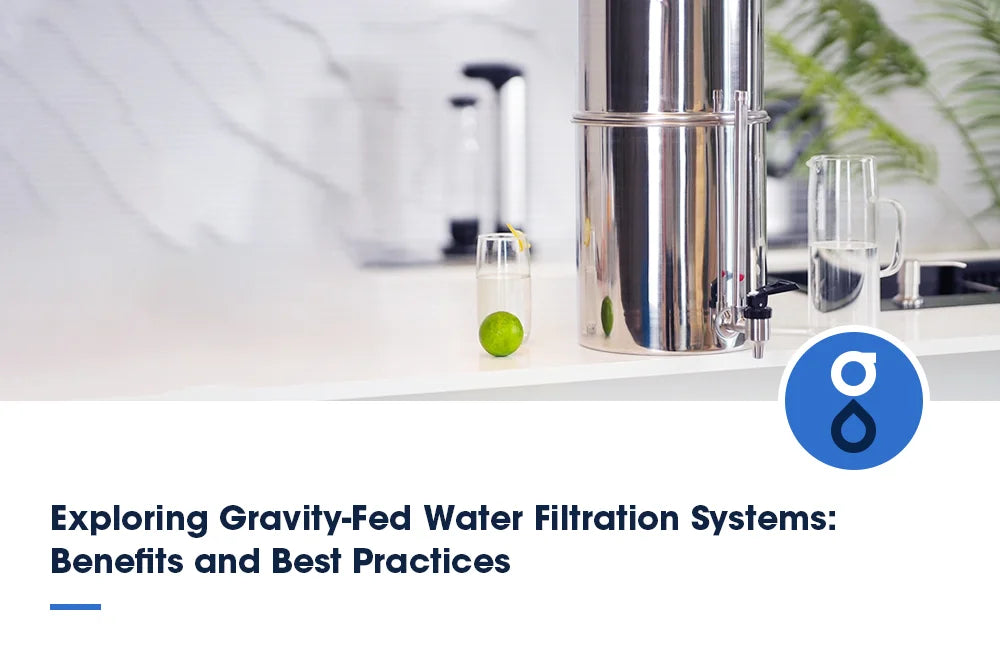Table of Contents:
The basics of osmosis and reverse osmosis
The origins of reverse osmosis
The development of reverse osmosis filtration
The applications of reverse osmosis filtration
The prospects and challenges of reverse osmosis filtration
FAQs
Conclusion
Reverse osmosis, a process that allows the removal of impurities from water by utilizing a semi-permeable membrane, has come a long way since its early conception. What was once a relatively unknown concept has now become one of the world's most important water treatment technologies.
In this article, we will explore the fascinating evolution of reverse osmosis, from its humble beginnings to its wide range of modern applications. We will dive into the key milestones, technical advancements, and innovative uses of reverse osmosis in various industries.
The basics of osmosis and reverse osmosis

In osmosis basics, understanding membrane structure is vital. Membranes act as barriers, allowing only specific particles to pass through based on size and charge, which is crucial for separating solute concentration in reverse osmosis.
Pressure requirements play a significant role in reverse osmosis systems. By applying pressure higher than the osmotic pressure, water is forced through the membrane, leaving behind contaminants. Membrane selectivity is critical to achieving high water purification standards.
The system's design must consider energy efficiency to ensure optimal performance and cost-effectiveness. Monitoring flux rates, which indicate the volume of water passing through the membrane per unit of time, is essential for assessing the system's efficiency.
The origins of reverse osmosis
The origins of reverse osmosis can be traced back to mid-20th-century research on membrane technology and water desalination. Early experiments paved the way for membrane development, which has historical significance in water treatment.
Scientific breakthroughs during this time showcased the potential of reverse osmosis in purifying water by using a semi-permeable membrane to separate contaminants from clean water. Technological advancements further propelled the efficiency and practicality of reverse osmosis systems, making them a cornerstone in modern water purification processes.
These early studies laid the foundation for the widespread adoption of reverse osmosis technology in various industries, from desalination plants to residential water filtration systems. The continuous refinement of reverse osmosis methods over the years has solidified its position as a reliable and effective solution for producing high-quality drinking water and treating wastewater, marking a crucial chapter in the evolution of water treatment technologies.
The development of reverse osmosis filtration
While developing reverse osmosis filtration, researchers focused on enhancing membrane technology to improve water purification processes. Early experiments in the field led to the creation of more advanced membranes capable of filtering out contaminants effectively. These advancements increased the filtration process's efficiency and paved the way for the commercial adoption of reverse osmosis systems in various industries and households.

The applications of reverse osmosis filtration
Desalination: producing clean water from saline sources
Reverse osmosis technology is crucial in desalination processes to produce clean water from saline sources. Seawater desalination is particularly vital in addressing global water scarcity. Using membrane technology, desalination plants can convert brackish water or seawater into potable water with high energy efficiency and excellent water quality. This method ensures a sustainable water supply and helps combat the environmental impact associated with traditional desalination processes.
Moreover, reverse osmosis's cost-effectiveness, coupled with its ability to mitigate membrane fouling, makes it a preferred choice for desalination projects worldwide. As the demand for freshwater continues to rise, especially in arid regions, the importance of seawater desalination can't be overstated. Embracing advanced reverse osmosis technology is crucial for ensuring a reliable and sustainable source of clean water for communities facing water scarcity challenges.
Industrial applications: treating wastewater and chemical solutions
Reverse osmosis technology extends its utility beyond desalination by finding invaluable applications in efficiently treating industrial wastewater and chemical solutions. Water treatment plays a crucial role in ensuring sustainable operations in industrial processes.
Through membrane technology, reverse osmosis has become a cornerstone in wastewater management, providing effective filtration systems that enhance industrial sustainability. By utilizing reverse osmosis for treating chemical solutions, industries can reduce their environmental impact while meeting regulatory standards.
The versatility of reverse osmosis in industrial applications is evident in its ability to address diverse challenges, from purifying water for reuse to concentrating chemical solutions for manufacturing processes.

Portable water treatment: providing safe drinking water
In the realm of water purification, reverse osmosis technology plays a crucial role in providing safe drinking water through portable treatment systems. These systems are vital for various scenarios such as emergency response efforts, disaster relief operations, and catering to the water needs of remote communities, outdoor adventurers, and developing countries.
Access to clean drinking water is often compromised during emergency response situations like natural disasters or humanitarian crises. Portable reverse osmosis systems can swiftly provide safe water by removing contaminants and pathogens, ensuring the health and well-being of affected populations.
Similarly, in remote communities or developing countries lacking infrastructure, these portable systems offer a practical solution for obtaining potable water. Portable reverse osmosis systems can be a lifesaver for outdoor enthusiasts embarking on adventures in rugged terrains where clean water sources are scarce.
The prospects and challenges of reverse osmosis filtration
Advancements in membrane technologies for reverse osmosis
Membrane innovations are crucial in improving water purification processes and ensuring high-quality water output. These advancements focus on enhancing energy efficiency, allowing for lower operational costs and reduced environmental impact. Sustainable practices are being integrated into membrane design, promoting eco-friendly solutions for water treatment.
One of the key challenges in membrane technologies is membrane fouling, which hinders system performance and requires frequent maintenance. Researchers are working on developing fouling-resistant membranes to mitigate this issue and prolong system lifespan. Addressing membrane fouling can significantly improve the efficiency and longevity of reverse osmosis systems.
Increasing water recovery rates in reverse osmosis systems
Focusing on membrane technology and improving filtration processes aims to increase water recovery rates and effectively address the challenges of water scarcity. Energy efficiency is another crucial aspect being considered, as reducing energy consumption in reverse osmosis systems contributes to sustainability efforts.
Improved filtration techniques enhance the puri bty of the treated water and significantly increase water recovery rates. Achieving higher water recovery rates in reverse osmosis systems is essential for maximizing the utilization of available water resources.
Implementing advanced membrane technologies and optimizing system efficiency will help overcome water scarcity challenges and promote sustainable water management practices. Researchers are dedicated to enhancing water recovery rates through innovative solutions prioritizing water sustainability and energy efficiency.
Integration of renewable energy sources in reverse osmosis plants
Exploring the integration of renewable energy sources in reverse osmosis plants presents promising opportunities for enhancing sustainability and addressing energy consumption challenges. Energy efficiency is a key focus, aiming to optimize power usage and reduce environmental impact. Solar integration offers a clean and abundant energy source that can efficiently power reverse osmosis system. Wind power, another renewable option, can supplement energy needs and contribute to a greener operation. Biomass utilization presents the potential for providing sustainable energy for desalination processes, further reducing reliance on non-renewable resources.
Additionally, exploring hydroelectric synergy can lead to innovative solutions where reverse osmosis plants can benefit from integrating hydroelectric power generation. While these renewable energy sources offer significant advantages, intermittency and reliability must be addressed to ensure consistent operation.
FAQs
Can reverse osmosis remove pharmaceuticals and microplastics from water?
Yes, reverse osmosis can effectively remove pharmaceuticals and microplastics from water. The process uses a semi-permeable membrane to filter out these contaminants, ensuring you and your family have cleaner and safer drinking water.
How does temperature affect the efficiency of reverse osmosis systems?
In reverse osmosis systems, temperature impacts efficiency. Higher temperatures often increase productivity as warmer water is easier to process. Conversely, colder temperatures can slow filtration, affecting overall system performance.
Conclusion
You've learned about the evolution of reverse osmosis, from its early beginnings in membrane research to its modern applications in various industries and households. With advancements in technology and increased efficiency, reverse osmosis has become crucial in addressing water scarcity and providing clean drinking water solutions. The future of reverse osmosis holds even more potential for innovation and improvement as we continue to tackle challenges in water treatment and sustainability. Follow Glacier Fresh to find more water filtration solutions.





